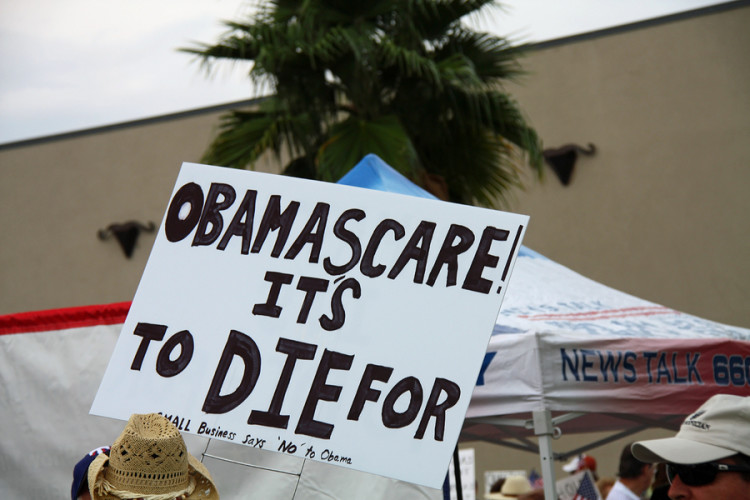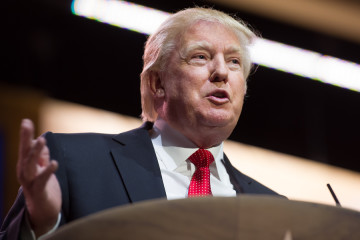Immigration, Obamacare, Unintended Consequences: Megan McArdle

So these are big changes in and of themselves. And future executive orders could have an even more sweeping impact, including changing the rules under which lower-skilled workers are admitted to the U.S.
The idea reportedly under consideration is to alter the conditions under which potential immigrants are considered likely to become a “public charge.” The government currently bars people from admission to the U.S., or from getting a green card, if they are deemed likely to need cash benefits like Temporary Assistance to Needy Families. But of course, there are also substantial non-cash benefits available to people legally living in the U.S., especially health-care services like Medicaid, the Children’s Health Insurance Program or Obamacare subsidies. Barring individuals who might benefit from those programs would significantly reduce the number of lower-skilled immigrants who are eligible to stay in the U.S. legally.
Such a change in immigration criteria might also have a major impact on those programs. Because American immigration policy is biased toward family reunification, more than the skills-based systems used by many other countries, we get a lot of lower-skilled immigrants who receive some help from the government (and, of course, contribute to the economy and the tax base). For example, legal immigrants benefited from Obamacare much more than native-born citizens. Those people will continue to benefit; the proposal is apparently to change how we assess new immigrants, not people who have already gotten green cards or been naturalized. But changing the nature of our immigration flows would change how many people those programs cover in the future.
One obvious result of that is that we could expect to spend less on Medicaid. But a less obvious impact is that Obamacare’s insurance pools might end up less stable, with fewer people. It’s impossible to figure out exactly how many immigrants buy insurance on the exchanges, because the Department of Health and Human Services does not break those numbers out. But given the steep decline in the uninsured rate among immigrants since Obamacare passed, it’s probable that the number is significant.
That would be one more blow for a program that can’t stand many more. Exchange enrollment seems to have roughly stabilized this year, at well below expected levels. The age mix may also be shifting slightly, and in the wrong direction, toward older people who will require more health care. The more people leave, the harder it will be to stabilize those insurance pools. Especially if the people leaving are young, healthy immigrants who have come here to work. The U.S. government might end up with some fiscal savings in the near term. At what cost to the U.S. economy in the near term and the long term? And at what cost to the U.S. government over the long term?
Obviously, the U.S. should not tailor its immigration policy to prop up a badly designed government program — not least because it’s not clear that Obamacare will still be around in a few years. (Though “repeal and replace” is turning out to be harder than Republicans fantasized, Trump has already signed an executive order that could, depending on how it’s implemented, destroy the exchanges.)
But Obamacare is not the only place where the effects of immigration restrictions would be felt. It illustrates just how deeply embedded immigration is in our economy and our political institutions. A change to our immigration policy does not just affect the people we let in (or don’t); it will ripple outward to affect all manner of other things, in ways that the people making the changes aren’t necessarily thinking about when they put pen to paper.
This column does not necessarily reflect the opinion of the editorial board or Bloomberg LP and its owners.







No Comment